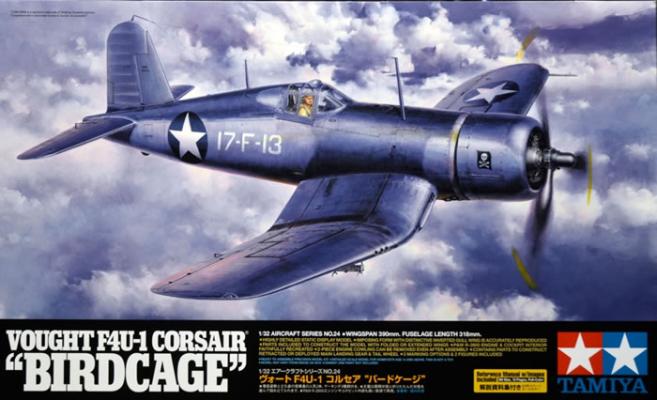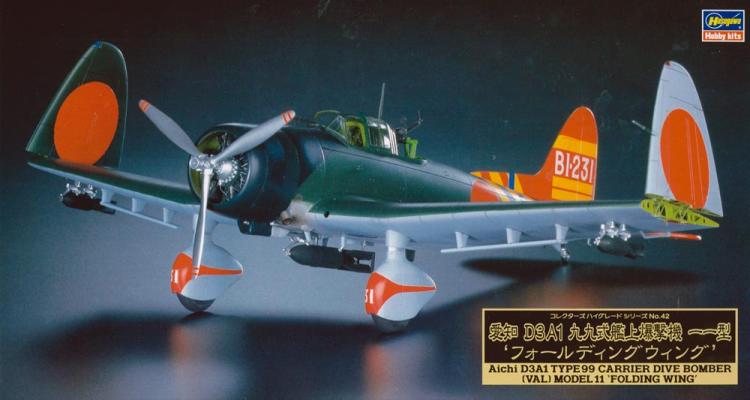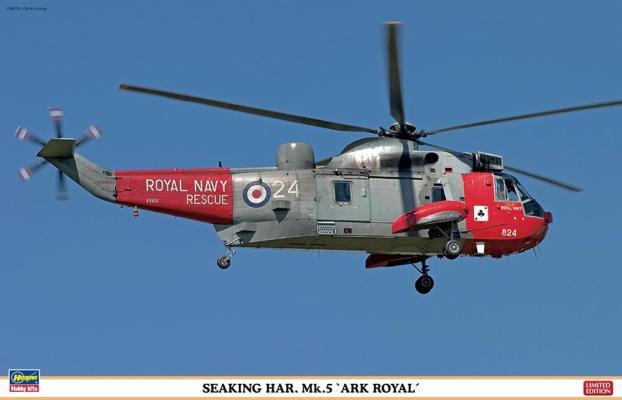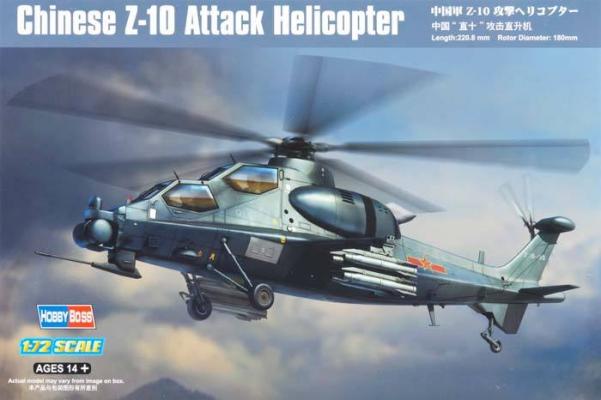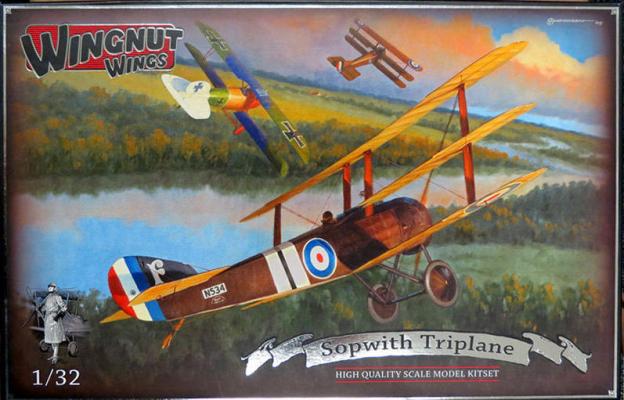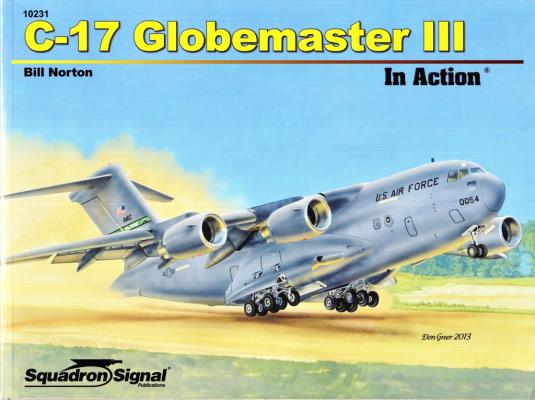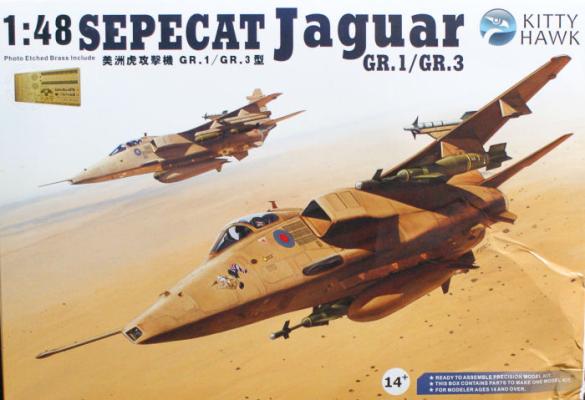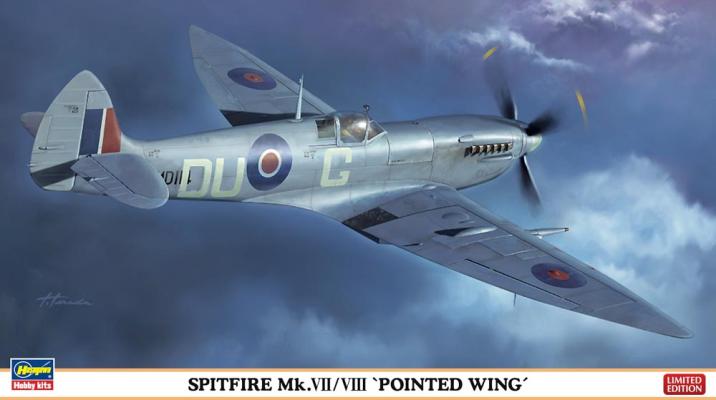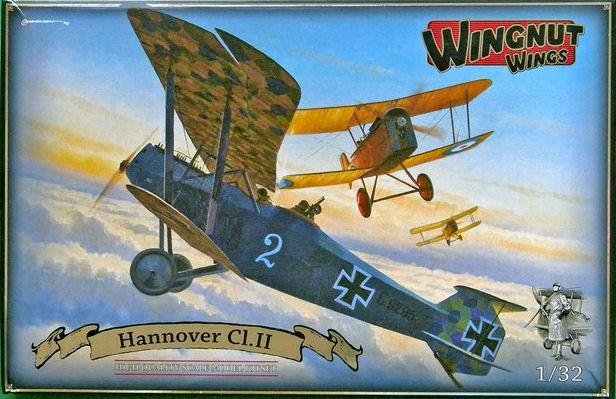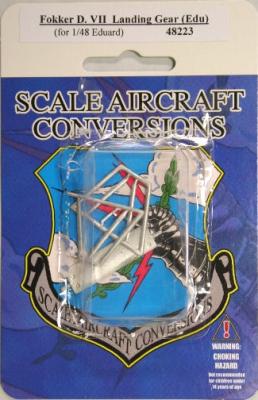Wow. When this came in, I thought about first doing only a sprue review, but elected pass. Several other web sites have sprue shots, but to me, as a modeler, I want to see the build and not unassembled sprues. So I started right off building. A quick look at the kit: 17 sprues with 2 clear. The kit I had is the export version and has a clear cowling. This also includes the standard clear sprue, two sprues of pilots, and a stand. There are two PE frets, decals, and a masking set (not precut). There is also the gigantic instruction book. The kit is as nice as advertised – but enough preview, let’s glue and paint.
History Brief
In 1936, the Imperial Japanese Navy requested bid submissions for a carrier-based bomber prototype from Mitsubishi, Nakajima, and Aichi. With Mitsubishi dropping out early, the contest was narrowed down to the two remaining competitors. The Aichi prototype made its initial test flight in 1938 and despite several R&D problems was officially adopted in 1939 over the Nakajima prototype on the merits of its superior speed and maneuverability.
The usual sincere “thank you and appreciate your providing us cool stuff!!!!” goes out to Hobbico for their continued, unflinching support of IPMS USA. I also am more than pleased to send out appreciation to our team leading the Reviewer Corps – Steve and Dick, glad you stick with us!
A re-release of the venerable Sea King from the Hasegawa stable, this kit provides the additional details to make an HAR. Mk. 5 in the form of the radome on the aft fuselage spine, the ice/sand filter in front of the engine intakes, a six-bladed rotor, and several cast metal parts such as a water-rescue stand for the lower right side under the door, a metal rod next to it (probably a grab-bar for the spec-ops types to hold onto), and metal spike antennas under the lower front fuselage area. There are also flare dispensers included in plastic, along with different antenna arrays for this particular mark.
The Z-10 is a Chinese attack helicopter whose mission is anti-armor and battlefield interdiction. Its development began in the 1990’s and its maiden flight was in 2003. China had seen a need for a dedicated attack helicopter because in the past it had only used up-armored transport helicopters and required a more specifically armed and mission-oriented helicopter in the future.
The Z-10 has a standard gunship configuration, with a narrow fuselage and stepped tandem cockpit, the gunner in the front and pilot in the back. The Z-10 has sloped sides to reduce radar cross section, and armored plates to protect all vital systems. The prototype was powered by two Canadian Pratt and Whitney PT6C-67C turboshaft engines. At first glance, it looks a lot like an Apache attack helicopter.
The Sopwith Triplane was a follow-up to the highly successful 80hp Pup that was widely liked by the young pilots of the Royal Flying Corps (RFC) and Royal Naval Air Service (RNAS). The Triplane prototype was powered by a 110hp Clerget rotary. The prototype was quickly accepted and sent to the front for trials with A Squadron of the RNAS. A Squadron took the new Tripe into combat as soon as it arrived in France. A second Triplane powered by the 130hp Clerget was sent to France in August of 1916. This new highly maneuverable aircraft was an instant hit with the RNAS pilots who had a chance to fly it in combat. Although similar to the Pup, the Triplane fuselage was redesigned for the larger 110hp & 130hp rotary engines. The wingspan was the same as the Pup, but the narrow chord wings allowed better visibility for the pilots. It was more maneuverable than the Pup and had a quicker rate of climb.
The Squadron In Action series was started in 1971. This series covers the development, testing, and production of aircraft, armored vehicles, and ships. The focus of this book is on the C-17 Globemaster III.
In 1968, the USAF was looking for a replacement of the C-130. They wanted a medium transport that could carry 67 percent more cargo with STOL capabilities. Two companies stepped up with two designs – Boeing with the YC-14 and McDonnell Douglas with the YC-15. McDonnell Douglas was eventually awarded the contract and thus the C-17A was born.
The Jaguar GR.1/GR.3 is Kitty Hawk’s second release of the Sepecat Jaguar in 1/48th scale. There are many things in common with the first release. The molding is very well done, and the plane has a great shape. One thing off the bat you will need to watch for is the instructions. In my booklet of instructions (which have great color views of the entire plane and all schemes and the weapons), steps 19 and 20 were missing. These steps involve adding the wings and tail parts, as well as the location of several parts on the bottom and top. A quick e-mail to Kitty Hawk and they forwarded the missing steps – I have scanned them and attached them here. The second problem with the instructions is that several of the parts were very difficult to place and the directions were a little vague. A few brief internet searches, and these were resolved.
Introduction
This Spitfire kit is a limited edition by Hasegawa and features new wingtip and canopy parts, plus decals for three RAF. planes. The Mk. VII and Mk. VIII versions had extended wingtips – rather pointed, actually – that allowed them to meet the Luftwaffe aircraft that had an operational advantage at higher altitudes. One of the therr schemes included on the decal sheet is that of Pierre Henri Clostermann, a French ace who scored over a dozen victories while flying the Mk. VII. It is Clostermann’s markings that were chosen for this review item.
The Clostermann scheme, as previously mentioned, is one of three sets of markings on the decal sheet. The three selections are:
As with most kits, the Hannover CL.II’s instruction book focuses first on assembling the cockpits, and the assembly sequence, although involved, is very straightforward. But, before anything is assembled, the instructions guide the builder to paint the sidewalls and all of the various cockpit components according to the color callouts provided on pages 4 thru 7. Because there is much to be seen in the Hannover’s cockpits, painting the small details will require some time and patience. However, I personally found the experience to be both educational and enjoyable. In my opinion, building a first Wingnut Wings kit probably will prove to be a very different experience for model builders who are accustomed to assembling other mainstream plastic model kits. Looking inside a WNW kit box, a builder will find both a plastic model kit and an education rolled up in a brilliantly engineered package.
Scale Aircraft Conversions (SAC) has been producing drop-in white metal landing gear replacements for a growing range of kits since 1990. White metal offers substantially more strength than the styrene kits parts, which is a useful benefit for kits that are heavy or where the gear is especially fiddly. In this case, we are looking at the main gear and tail skid that fit the Eduard 1/48 Fokker D.VII.
Eduard does a nice job making the kit’s landing gear struts to scale, but this also means that they are very thin and fragile. In addition, Eduard’s attachment points are often very shallow and benefit from pinning the struts in place to strengthen the join. Up step the SAC replacement struts.

